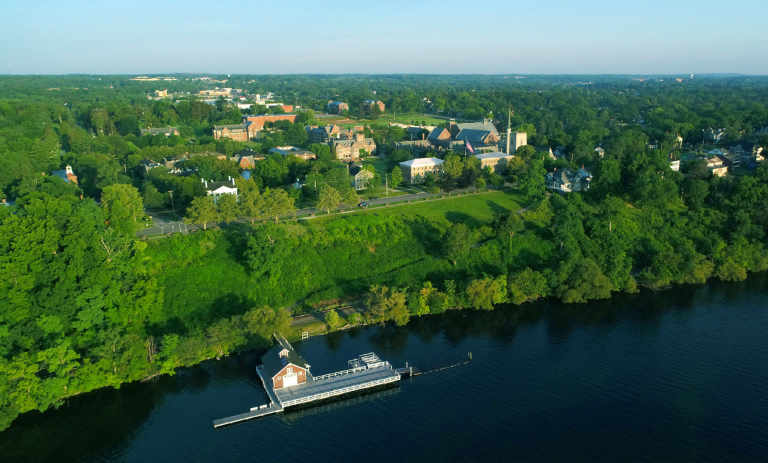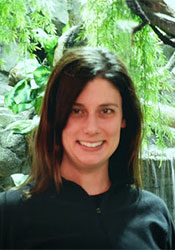
Lives of Consequence
Malia Somerville '98

General Curator, Buffalo Zoo
"As a first-year at HWS," says Malia Somerville '98, "I knew I wanted to do something for the environment. I wasn't sure what that would look like for many years."
As a biology major, Somerville participated in several different internships and academic enrichment experiences – including a Howard Hughes Research Fellowship, a semester abroad in Mexico, and an internship with the American Museum of Natural History – and saw the variety of perspectives and roles she could play in the field of conservation.
While working for an environmental NGO in Washington, D.C. after graduation, Somerville began volunteering at the National Zoo. It was that experience that led her to pursue a master's degree in conservation biology at American University while working with a Smithsonian scientist.
"One of my professors recommended I focus on a career in policy," she says. "I worked for the U.S. Senate and U.S. Fish and Wildlife Service for several years, all along volunteering at the zoo. I decided to change careers and was lucky enough to land my dream job as a zookeeper. After many years in D.C., I was ready for a change and couldn't pass up the opportunity to move back to Buffalo."
In her role as the general curator for the Buffalo Zoo, Somerville is tasked with managing the animal keepers and working with the other zoo departments to provide the best quality veterinary care, nutrition, exhibits and visitor experience.
All that work, however, is in the service of the animals themselves.
"My primary responsibility is to provide for the welfare of the animals," Somerville says. "I couldn't do this job if it weren't for the animals. We are responsible for their livelihood. It's a responsibility I take very seriously. It's rewarding to see them thrive and heartbreaking when they leave us."
Somerville is proud of the work the Buffalo Zoo has done to conserve endangered species in the wild, and is optimistic about the role zoos play in wildlife conservation across the globe.
"Many species are saved from extinction by zoos and captive breeding programs," she says. "Each animal in our care is an ambassador for their wild counterparts, inspiring visitors to treat the earth a little more kindly each day."
In a partnership with New York Department of Environment and Conservation, for example, Somerville and her colleagues at the Buffalo Zoo raise hellbenders, a native salamander species, for reintroduction in the wild.
"The Zoo is a ‘head start' program, giving the young hellbenders a chance to grow strong before braving the wild streams. While at the Zoo, the hellbenders are on exhibit for visitors to see and learn how they can help conserve native species. This project is the perfect model for the good zoos can do," she says.
Above all, Somerville is passionate about "providing the best possible care for our animals each and every day. They rely on us for everything -- nourishment, comfort, enrichment. We will not let them down."
